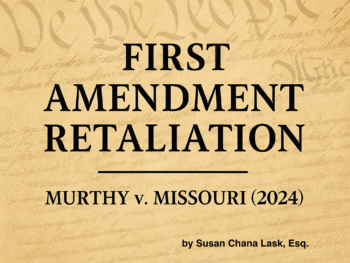NOTE: THIS OPINION WILL NOT APPEAR IN A PRINTED VOLUME. THE DISPOSITION WILL APPEAR IN A REPORTER TABLE.
Supreme Court, Nassau County, New York.
ANGELA R., Plaintiff
v.
GREGORY R., Defendant.
No. XXXXX.
Dec. 22, 2009.
Susan Chana Lask, Law Offices of Susan Chana Lask, New York, NY, for Plaintiff.
Steven C. cohen, Franklin, Gringer & Cohen, P.C., Garden City, NY, for Defendant.
ANTHONY FALANGA, J.
*1 This is a motion by the husband for an order pursuant to CPLR 2221 granting him leave to reargue a portion of the wife’s pendente lite application decided by order dated September 1, 2009. The wife cross moves for sanctions, costs, and attorneys fees.
Leave to reargue is granted.
Pursuant to an order to show cause submitted on August 24, 2009, the wife moved for an order “declaring that the 2003 settlement proceeds of plaintiff’s personal injury action, the marital residence, and all other assets derived from said proceeds, are her separate property, and scheduling a hearing to determine the allocation of the medical malpractice net settlement proceeds of $4,800,000.00 …”. The husband did not cross move for relief, but opposed the wife’s application on the ground that the unallocated settlement proceeds became “co-mingled marital funds” by virtue of the deposit of the settlement proceeds into an account in the names of both parties.
Personal injury settlement proceeds are separate property pursuant to DRL 236B (1)(d)(2). Where spouses receive an unallocated medical malpractice settlement during the marriage, the Court adjudicating their divorce action must parse out what part of the settlement is due each spouse as and for his and her separate property as defined by DRL 236(B)(1)(d)(2) and (5)(a) (see, Richmond v. Richmond, 144 A.D.2d 549, 534 N.Y.S.2d 413;SM v. MM, 13 Misc.3d 1201(A); Kaye v. Kaye, 6 Misc.3d 1005(A).
The husband herein contends, however, that the settlement proceeds in issue were transmuted into marital assets upon the deposit and retention of the unallocated settlement proceeds into a joint investment account. The Court notes that there is no allegation in the papers submitted on the original motion, or on the within application, that the settlement proceeds were ever co-mingled with marital funds. The information provided to the Court is that the settlement check, made payable to both parties, was deposited into a joint investment account, utilized from time to time to pay living expenses. In or about April 2007, a substantial portion of the funds on deposit in said account were divided equally into two separate trust accounts for estate planning purposes. The husband has not alleged that marital earnings, marital income (other than the interest and dividends generated by the principal of the settlement proceeds) or any marital assets were ever deposited into the subject joint investment account. Accordingly, this does not appear to be a case governed by the precedent relied upon by the husband dealing with personal injury settlement proceeds that have been co-mingled with marital funds (see, e.g., Litvak v. Litvak, 63 A.D.3d 691, 880 N.Y.S.2d 690;Fehring v. Fehring, 58 A.D.3d 1061, 874 N.Y.S.2d 266;Crescimano v. Crescimano, 33 A.D.3d 649, 822 N.Y.S.2d 310;Ruzicka v. Ruzicka, 31 A.D.3d 862, 817 N.Y.S.2d 770;Sherman v. Sherman, 304 A.D.2d 744, 758 N.Y.S.2d 667;DiNardo v. DiNardo, 144 A.D.2d 906, 534 N.Y.S.2d 25;Gunlach v. Gunlach, 223 A.D.2d 942, 636 N.Y.S.2d 914lv den88 N.Y.2d 802, 645 N.Y.S.2d 445, 668 N.E.2d 416).
*2 In actuality, the husband’s contention is not that the settlement proceeds were co-mingled, but rather, that the deposit of same, in a joint investment account, presumptively created a joint tenancy pursuant to Banking Law 675 (see, Fehring v. Fehring, supra, applying Banking Law 675 to investment accounts), which presumption may be rebutted by clear and convincing proof that the funds were deposited in joint name for convenience reasons without intent to confer a beneficial interest therein (see, Chamberlain v. Chamberlain, 24 A.D.2d 589, 261 N.Y.S.2d 1000 Lagnena v. Lagnena, 215 A.D.2d 445, 626 N.Y.S.2d 542;Giuffre v. Giuffre, 204 A.D.2d 684, 612 N.Y.S.2d 439).
In Chamberlain v. Chamberlain, supra, the husband deposited his premarital, separate property personal injury settlement proceeds into an investment account held jointly with the wife, but met his burden of rebutting the presumption created pursuant to Banking Law 675, by proving that he did not intend to confer a beneficial interest in said proceeds to the wife.
In the case at bar, if the wife only had received personal injury settlement proceeds, and had deposited same in a joint investment account, she, like the husband in Chamberlain v. Chamberlain, supra, would have been required to rebut the Banking Law 675 statutory presumption. In the absence of sufficient proof to rebut the joint tenancy presumption, the funds on deposit in the investment account would constitute marital property subject to equitable distribution. (In equitably distributing said asset pursuant to the factors set forth in DRL 236B, the Court could award the wife 100% of same regardless of the joint tenancy created by Banking Law 675 [see, Garner v. Garner, 307 A.D.2d 510] ).
The settlement proceeds in issue were not paid solely to the wife, but were paid, unallocated, to both parties. Accordingly, the extent of neither party’s interest in the award was ever determined. The wife was unable to confer an interest to the husband of her share in the settlement proceeds, as her share was never allocated. Similarly, the husband was not able to confer an interest in his share to the wife. Unallocated personal injury settlement proceeds, deposited in a bank account in joint name, and not transmuted into marital property by the comingling of same with marital funds, remain the unallocated separate property of the parties pursuant to DRL 236B (1)(d)(2) regardless of the rebuttable joint tenancy presumption set forth in Banking Law 675. Such proceeds, as set forth herein above, must be allocated by the court adjudicating such parties’ action for divorce.
To hold otherwise would contravene the public policy against forcing spouses in an intact marriage to litigate issues that might never become contested if the marriage remains viable (see, Scheinkman, Practice Commentaries, DRL 250 ).
Based upon the foregoing, upon reargument, the Court adheres to its original decision and order dated September 1, 2009. Upon trial of the action, the Court will hear proof on the issue of the allocation of the 2003 personal injury settlement proceeds between the parties. The wife’s cross motion is denied.
*3 (The Court notes that in DeMarco v. DeMarco, 143 A.D.2d 328, 532 N.Y.S.2d 293, decided by the Appellate Division in 1988, the principal portion of allocated personal injury settlement funds, which were deposited in a joint investment account by the parties, and apparently not co-mingled with other marital funds, were held to constitute each parties’ separate property not subject to equitable distribution. The Appellate Division decision makes no reference to the joint tenancy imposed by Banking Law 675 and this Court cannot discern facts from the published decision that would distinguish DeMarco v. DeMarco, supra from Fehring v. Fehring, supra and or Chamberlain v. Chamberlain, supra. Accordingly, this Court has not relied on DeMarco v. DeMarco, supra as controlling precedent).
This constitutes the decision and order of the Court. The parties and counsel shall appear for a certification conference on February 9, 2009 at 9:30a.m. It is expected that all discovery will be completed by that date.
N.Y.Sup.,2009.
Angela R. v. Gregory R.
Slip Copy, 26 Misc.3d 1204(A), 2009 WL 5178335 (N.Y.Sup.), 2009 N.Y. Slip Op. 52660(U)









